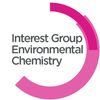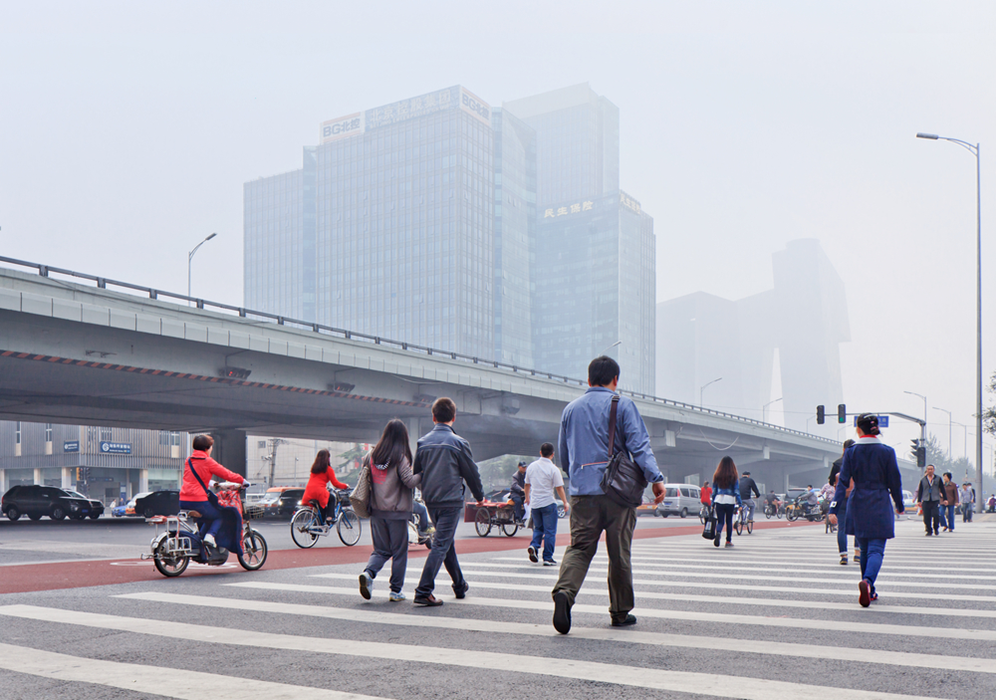- Home
- About
- Environmental Briefs
-
Distinguished Guest Lectures
- 2023 Water, water, everywhere – is it still safe to drink? The pollution impact on water quality
- 2022 Disposable Attitude: Electronics in the Environment >
- 2019 Radioactive Waste Disposal >
- 2018 Biopollution: Antimicrobial resistance in the environment >
- 2017 Inside the Engine >
- 2016 Geoengineering >
- 2015 Nanomaterials >
- 2014 Plastic debris in the ocean >
- 2013 Rare earths and other scarce metals >
- 2012 Energy, waste and resources >
- 2011 The Nitrogen Cycle – in a fix?
- 2010 Technology and the use of coal
- 2009 The future of water >
- 2008 The Science of Carbon Trading >
- 2007 Environmental chemistry in the Polar Regions >
- 2006 The impact of climate change on air quality >
- 2005 DGL Metals in the environment: estimation, health impacts and toxicology
- 2004 Environmental Chemistry from Space
- Articles, reviews & updates
- Meetings
- Resources
- Index
Air pollution and health: knowledge gained from journeys to Umea, London and Beijing
Professor Frank Kelly
Environmental Research Group, King's College London
[email protected]
ECG Bulletin July 2017
Environmental Research Group, King's College London
[email protected]
ECG Bulletin July 2017
In cities across the globe, road transport is an important source of air pollutants that are linked to acute and chronic health effects. In the last 20 years, my research group has investigated these associations in human challenge chamber studies in Umea, Sweden, real world exposure scenarios in London, and recently in the megacity Beijing, China. In this article, I review our findings and those from other groups to show that humankind must advance beyond a fossil fuel-based road transport system.
The main particulate matter (PM) components originating from road traffic are engine emissions, largely comprising elemental carbon and organic carbon, and non-exhaust sources that are often characterised by elevated concentrations of transition metals from brake wear (copper, antimony), tire abrasion (zinc), and road surface wear and dust resuspension (iron). The largest single source is derived from diesel exhaust. Indeed, owing to the increased market penetration of diesel engines in many European countries and the fact that they generate up to 100 times as many particles as comparable gasoline engines with three-way catalytic convertors, diesel exhaust particles contribute significantly to the airshed in many of the world’s largest cities.
The main particulate matter (PM) components originating from road traffic are engine emissions, largely comprising elemental carbon and organic carbon, and non-exhaust sources that are often characterised by elevated concentrations of transition metals from brake wear (copper, antimony), tire abrasion (zinc), and road surface wear and dust resuspension (iron). The largest single source is derived from diesel exhaust. Indeed, owing to the increased market penetration of diesel engines in many European countries and the fact that they generate up to 100 times as many particles as comparable gasoline engines with three-way catalytic convertors, diesel exhaust particles contribute significantly to the airshed in many of the world’s largest cities.
|
Owing to the toxic and ubiquitous nature of vehicle derived particles, our early work at the University of Umea (see the photo) focused on controlled diesel exhaust exposure studies to understand the mechanisms through which diesel exhaust exacerbates respiratory disease, as identified in epidemiological research. To investigate effects on the airways, human volunteers (healthy and/or mild asthmatic) were exposed for one to two hours to whole diesel exhaust (particulates and the associated gas phase emissions) from an idling engine at concentrations ranging from environmentally relevant to those commonly experienced in busy diesel-dominated traffic environments.
By performing blood, bronchoalveloar lavage, and bronchial mucosal biopsy sampling after exposure, these studies have been instrumental in uncovering a systemic and pulmonary inflammatory response, attributed in part to the oxidative properties of exhaust PM (1‒7). |
This exposure also upregulates redox-sensitive transcription factors and their associated upstream stress-related mitogen-activated protein kinases in the bronchial epithelium of human airways (6). Signalling cascades such as these likely act as the trigger by which diesel PM induce expression of proinflammatory cytokines in airway tissue.
These events, in turn, provide a cellular basis for the rapid influx of neutrophils, lymphocytes, and mast cells from the circulation to the source of the inflammatory focus, namely the airways, as well as the systemic response in the form of neutrophilia and selective lymphopenia in the peripheral blood. These findings supported the well-established and highly regulated fashion in which neutrophils and other inflammatory cells from the blood transit into tissue. This occurs in association with an upregulation of adhesion molecules on the endothelial cells and their respective ligands on the leukocytes, along with release of chemo-attractants from the epithelial and inflammatory cells.
These events, in turn, provide a cellular basis for the rapid influx of neutrophils, lymphocytes, and mast cells from the circulation to the source of the inflammatory focus, namely the airways, as well as the systemic response in the form of neutrophilia and selective lymphopenia in the peripheral blood. These findings supported the well-established and highly regulated fashion in which neutrophils and other inflammatory cells from the blood transit into tissue. This occurs in association with an upregulation of adhesion molecules on the endothelial cells and their respective ligands on the leukocytes, along with release of chemo-attractants from the epithelial and inflammatory cells.
Although diesel exhaust consists of several pollutants, including gases (oxides of nitrogen, carbon, and sulphur) and PM components, it is unlikely that the NO2 concentrations (0.7 or 1.6 ppm) in the diesel exhaust used in these studies played any major role in the observed inflammatory events. In a study using a similar protocol, exposure to NO2 alone, at similar or higher concentrations for a longer duration (up to 2 ppm NO2 for 4 hours) failed to elicit adhesion molecule upregulation or significant changes in inflammatory cells in the bronchial mucosa sampled at the same time point; this observation suggests that the PM content of diesel exhaust is the responsible pollutant (8).
Away from orthodox, controlled exposure chamber studies, we next undertook work in London. Using the city as the laboratory, we used real world exposure scenarios to investigate the respiratory effects of short-term exposure to diesel traffic (9). In adults with mild to moderate asthma, walking for two hours along a busy city street where traffic is entirely diesel powered (as opposed to in a nearby park) resulted in a significant but asymptomatic reduction in lung function. In line with our studies of humans in exposure chambers and our current understanding of the chain of molecular events, roadside traffic exposures also induced inflammatory changes (9).
This evidence from research in Umea and London supports an interactive chain of events linking pollution-induced pulmonary and systemic oxidative stress, inflammatory events, and translocation of particle constituents with an associated risk of vascular dysfunction, atherosclerosis, and ischemic cardiovascular and obstructive pulmonary diseases. It is now clearly recognised that exposure to combustion-related PM, at concentrations experienced by populations throughout the world, contributes to pulmonary and cardiac disease through multiple mechanistic pathways that are complex and interdependent.
In contrast to the UK’s long industrial heritage, China has undergone rapid industrialisation over the past few decades, adding thousands of kilometres of urban road and hundreds of millions of vehicles. PM emissions from traffic have contributed to increasingly poor air quality in Beijing (see the photo) (10), threatening public health (11). The severity of air pollution in Beijing was first acknowledged when China was bidding for the Olympic Games in the 1990s. To address the problem, in 1998 the Beijing municipal government introduced the first of 16 stages of air pollution control measures.
This evidence from research in Umea and London supports an interactive chain of events linking pollution-induced pulmonary and systemic oxidative stress, inflammatory events, and translocation of particle constituents with an associated risk of vascular dysfunction, atherosclerosis, and ischemic cardiovascular and obstructive pulmonary diseases. It is now clearly recognised that exposure to combustion-related PM, at concentrations experienced by populations throughout the world, contributes to pulmonary and cardiac disease through multiple mechanistic pathways that are complex and interdependent.
In contrast to the UK’s long industrial heritage, China has undergone rapid industrialisation over the past few decades, adding thousands of kilometres of urban road and hundreds of millions of vehicles. PM emissions from traffic have contributed to increasingly poor air quality in Beijing (see the photo) (10), threatening public health (11). The severity of air pollution in Beijing was first acknowledged when China was bidding for the Olympic Games in the 1990s. To address the problem, in 1998 the Beijing municipal government introduced the first of 16 stages of air pollution control measures.
|
Initial measures mainly focused on shutting down small industrial and domestic coal burning stoves and controlling dust from road and construction sites, as well as phasing out old vehicles that did not meet emission standards. During the Beijing Olympics in 2008 (12) and the Asia-Pacific Economic Cooperation meeting in Beijing in 2014, aggressive measures were taken to reduce the number of vehicles on the road by allowing cars to be used on only certain days of the week, determined by the last digit of the car license number. This measure resulted in substantial temporary reductions in congestion and pollution concentrations in Beijing and was considered so successful that it was made a routine rule immediately after the Olympics. Today, every car is allowed to drive four days per five weekdays. These efforts to control air pollution in Beijing have shown some success.
|
Concentrations of PM2.5 (that is, PM with diameters of 2.5 μm or less) have started to fall in recent years. However, these benefits have been compromised to some extent by the rapid growth in vehicle numbers from 1.5 million in 2000 to 5.6 million in 2015.
In 2016 with funding from the UK’s Natural Environment Research Council (NERC) and the Medical Research Council (MRC) under the Newton Programme, we started work on a new project in Beijing, termed AIRLESS (Effects of air pollution on cardiopulmonary disease in urban and peri-urban residents in Beijing). We are examining the impact of air pollution on the health of residents who live in the centre of Beijing, compared with residents who live outside the Beijing urban sprawl in a rural area. The 120 individuals in the rural area are exposed to pollution from coal/biomass type burning, whereas in central Beijing the pollution is more traffic-based. We provide the volunteers with personal air quality monitors and measure their exposure for 24 hours a day for seven days. These data provide us with a unique view of their personal exposure to air pollution. We are also taking biological samples including blood and urine from these individuals, and we are looking for signals to the specific pollutants that they are being exposed to. With this approach, we will learn if the pollution in China results in the same type of biological responses we have seem previously in Umea and London; if not, we will have a better understanding of why different types of air pollution lead to particular biological responses.
References
Banner image: Rush hour traffic on a city road. Credit: Repina Valeriya/Shutterstock
In 2016 with funding from the UK’s Natural Environment Research Council (NERC) and the Medical Research Council (MRC) under the Newton Programme, we started work on a new project in Beijing, termed AIRLESS (Effects of air pollution on cardiopulmonary disease in urban and peri-urban residents in Beijing). We are examining the impact of air pollution on the health of residents who live in the centre of Beijing, compared with residents who live outside the Beijing urban sprawl in a rural area. The 120 individuals in the rural area are exposed to pollution from coal/biomass type burning, whereas in central Beijing the pollution is more traffic-based. We provide the volunteers with personal air quality monitors and measure their exposure for 24 hours a day for seven days. These data provide us with a unique view of their personal exposure to air pollution. We are also taking biological samples including blood and urine from these individuals, and we are looking for signals to the specific pollutants that they are being exposed to. With this approach, we will learn if the pollution in China results in the same type of biological responses we have seem previously in Umea and London; if not, we will have a better understanding of why different types of air pollution lead to particular biological responses.
References
- S. S. Salvi et al., American Journal of Respiratory and Critical Care Medicine 159, 702 (1999).
- S. S. Salvi et al., American Journal of Respiratory and Critical Care Medicine 161, 550 (2000).
- I. S. Mudway et al., Archives of Biochemistry and Biophysics 42, 200 (2004).
- J. Pourazar et al., Respiratory Medicine 98, 821 (2004).
- N. Stenfors et al., European Respiratory Journal 23, 82 (2004).
- J. Pourazar et al., American Journal of Physiology-Lung Cellular and Molecular Physiology 289, L724 (2005).
- A. F. Behndig et al., European Respiratory Journal 27, 359 (2006).
- A. Blomberg et al., American Journal of Respiratory and Critical Care Medicine 156, 418 (1997).
- J. McCreanor et al., New England Journal of Medicine 357, (2007).
- Y. Chen et al., Environmental Pollution 212, 269 (2016).
- G. Yang et al., Lancet 381, 1987 (2013).
- M. Wanget al., Atmospheric Chemistry and Physics 9, 8247 (2009).
Banner image: Rush hour traffic on a city road. Credit: Repina Valeriya/Shutterstock



